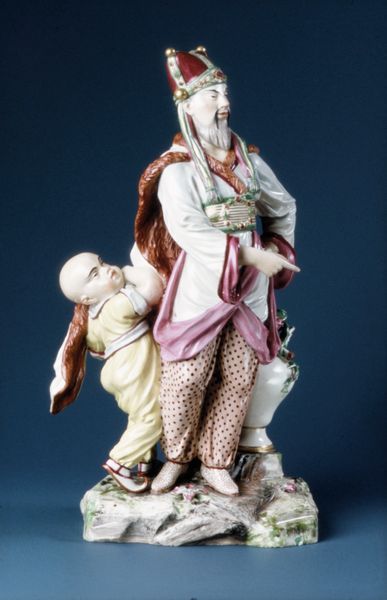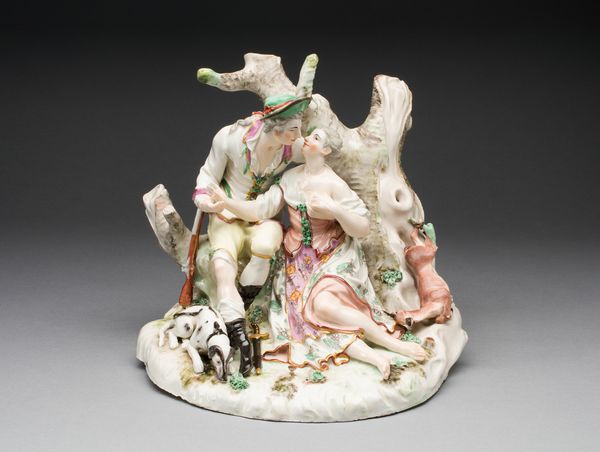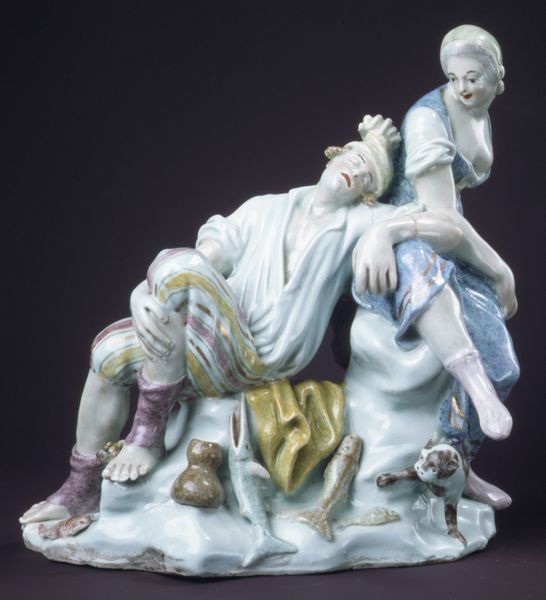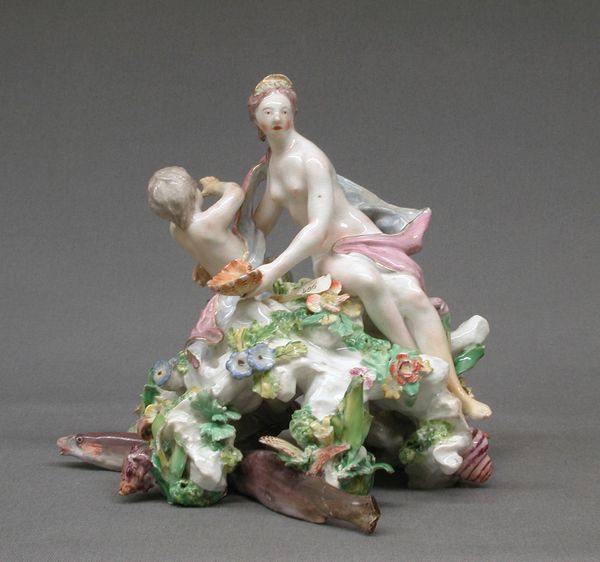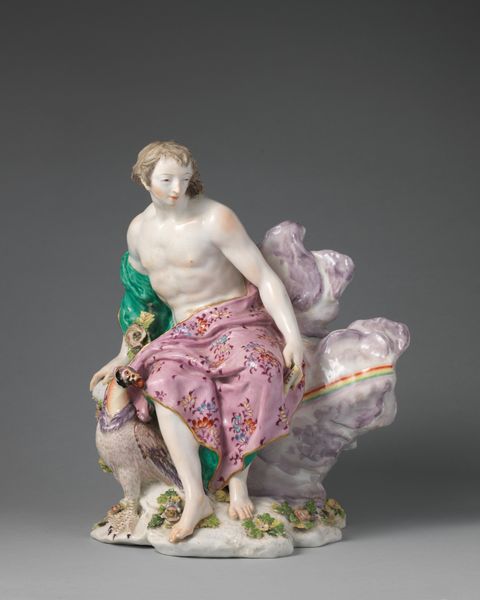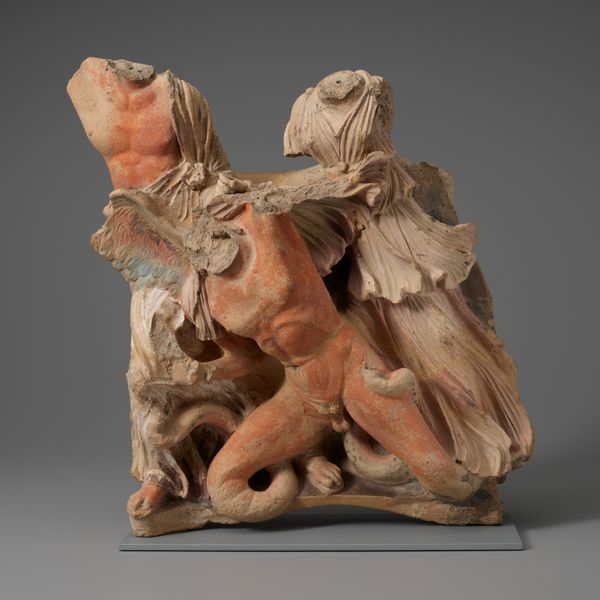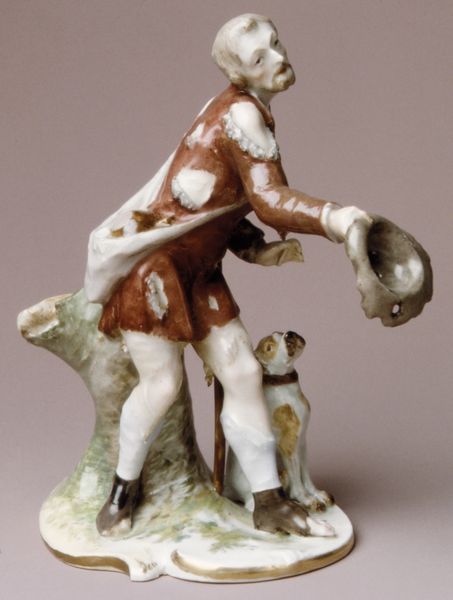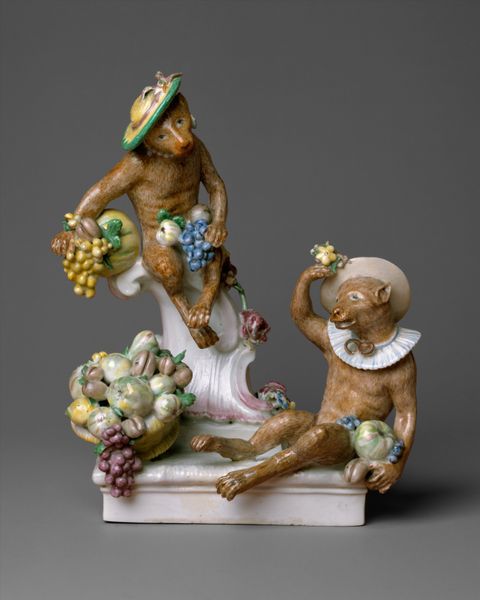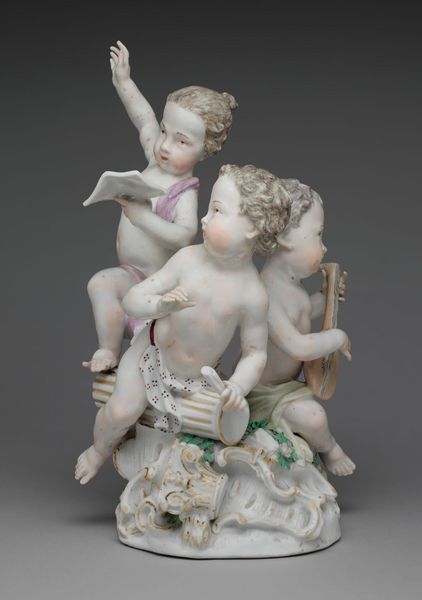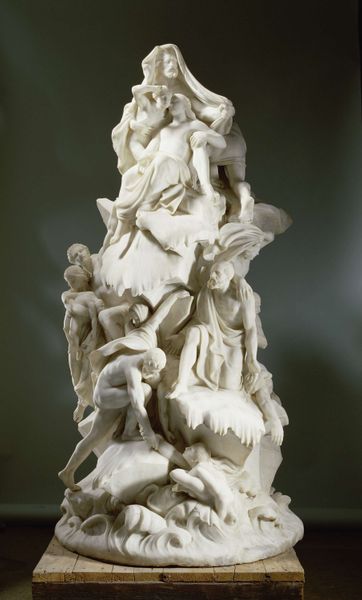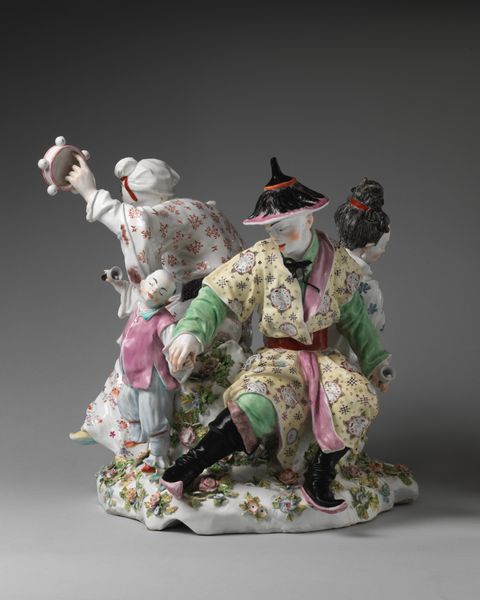
Emmerich Joseph, Prince-Bishop of Mainz 1765 - 1775
0:00
0:00
ceramic, porcelain, sculpture
#
portrait
#
sculpture
#
ceramic
#
porcelain
#
figuration
#
sculpture
#
decorative-art
#
miniature
#
rococo
Dimensions: 9 1/4 × 16 × 4 3/4 in. (23.5 × 40.6 × 12.1 cm)
Copyright: Public Domain
This is a porcelain bust of Emmerich Joseph, the Prince-Bishop of Mainz, created by the Höchst Manufactory, a German porcelain factory, sometime in the late 18th century. During this period, the aristocracy often commissioned elaborate artworks to reinforce their status and legacy. Here, the bust of Emmerich Joseph is framed by symbols of power and divinity: the heavy cloak, cherubic figures, and a laurel wreath placed above his head. Yet, the bishop’s gaze and the cherubs’ actions of unveiling the bust also suggest a vulnerability. By the 1700s, porcelain was a highly valued material, reflecting both wealth and refined taste. This bust would have been displayed in a private collection. The Höchst Manufactory operated in a society deeply structured by class and patronage. By creating such works, they not only demonstrated their technical skill, but also reinforced the social hierarchies of the time. This piece reflects the complex interplay between artistic production, social status, and personal identity in 18th-century Europe.
Comments
No comments
Be the first to comment and join the conversation on the ultimate creative platform.

